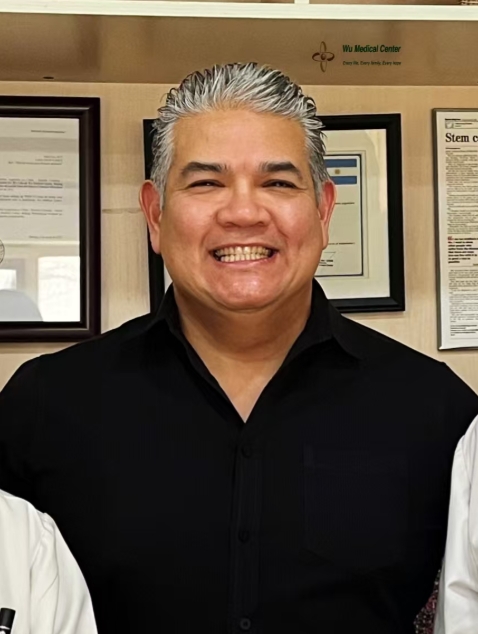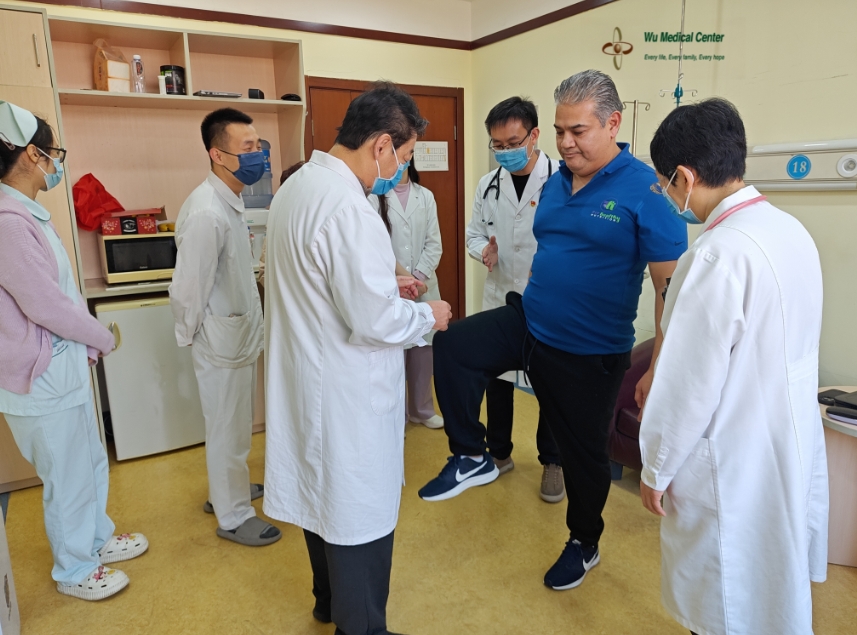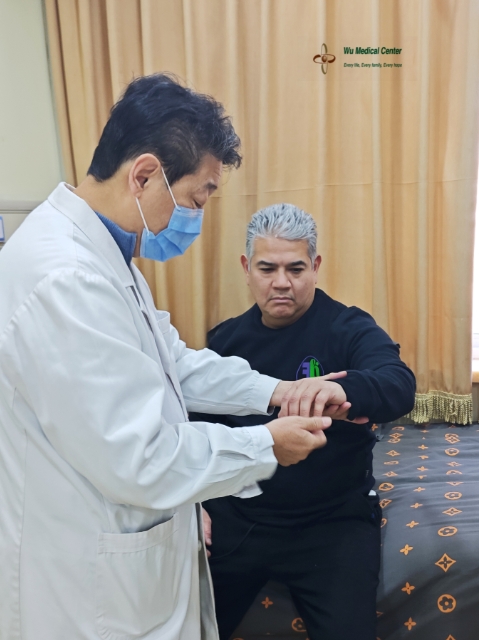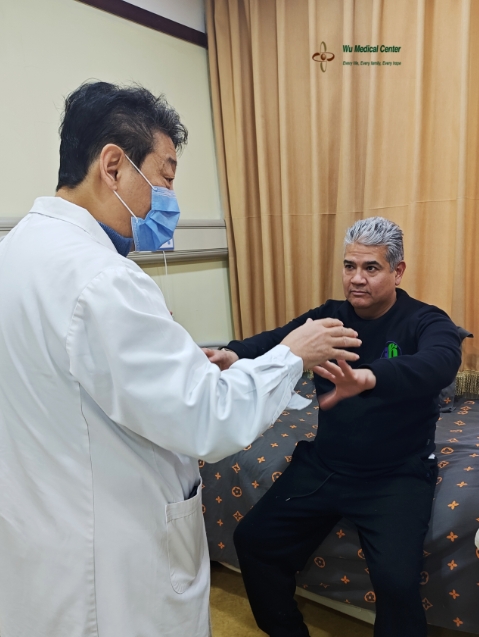Adolfo Noble Nietch-Hereditary spinocerebellar ataxia type I (SCA-I)-(United States)
 Patient Name: Adolfo Noble Nietch
Patient Name: Adolfo Noble Nietch
Gender: Male
Age: 49 years old
Nationality: United States
Diagnosis: Hereditary spinocerebellar Ataxia Type I (SCA-I)
Admission Status:
The patient was admitted due to "progressive balance disorders accompanied by involuntary movements for more than 2 years," diagnosed with "hereditary spinocerebellar ataxia (SCA-I)." His main symptoms include progressive balance disorders, unstable gait with a wide and slow base, occasional weakness in the hands (more pronounced in the left hand), and intermittent involuntary movements and tremors in the head and hands. His younger brother has the same condition.
Admission Examination:
The patient’s blood pressure was 122/76 mmHg, and his heart rate was 76 beats per minute. He is well-nourished, and his skin shows no jaundice. Respiratory sounds in both lungs are clear, with no rales. Heart sounds are strong and rhythmic, with no murmurs detected in any valve area. His abdomen is soft, with no enlargement of the liver or spleen detected. There is no edema in both lower limbs.
Neurological Examination:
The patient is alert, but his speech is unclear and explosive. His memory, calculation ability, and orientation are normal. Both pupils are 3 mm in diameter, with a sensitive light reflex; his vision and visual fields are normal, and there is horizontal nystagmus in both eyes. The forehead wrinkles and nasolabial folds are symmetrical, with no deviation of the mouth corners; the soft palate elevates strongly. His tongue protrudes in the midline. He has strong neck and shoulder movements. Muscle strength was grade 4 in his left upper limb and grade 4+ in his right upper limb. Muscle strength in both his lower limbs was grade 4+. There is no significant muscle atrophy. Muscle tone in his all four limbs was generally normal, with slightly hyperactive tendon reflexes. The Babinski sign was suspiciously positive in both lower limbs. He stood with a wide base and displayed an unstable gait that was slow and wide-based. There were intermittent intention tremors in his head and hands. The superficial and deep sensations in his limbs are generally normal. He performed the finger-to-nose test and rapid alternating movements clumsily, with the left hand being worse. He showed instability in the finger-nose test and the heel-knee-shin test. The Romberg test was positive with eyes open and closed. His postural adjustment ability was poor, and he could not stand on one foot. There are no signs of meningeal irritation.
Treatment Process:
The patient was admitted with a confirmed diagnosis of "hereditary spinocerebellar ataxia type I (SCA-I)." He received CAST therapy and a combination of neural stem cells and mesenchymal stem cells to repair cerebellar and spinal cord nerve damage, nourish nerves, improve the internal environment, and regulate immunity, along with comprehensive rehabilitation treatment.
Post-Treatment Outcomes:
The patient's balance function has significantly improved compared to before, and the intention tremors have become less noticeable. His performance in the finger-to-nose test, rapid alternating movements, and finger-to-finger test has improved, with increased speed and agility. He maintains a stable standing posture, his base of support has narrowed, and his postural adjustment ability has noticeably improved, with the Romberg test turning negative. He is able to stand on one foot for up to 8 seconds on both sides. His heel-knee-shin test has also improved in stability and accuracy, and his walking gait has shown improvement. Muscle strength in his limbs has also improved, reaching a basic grade 5.




